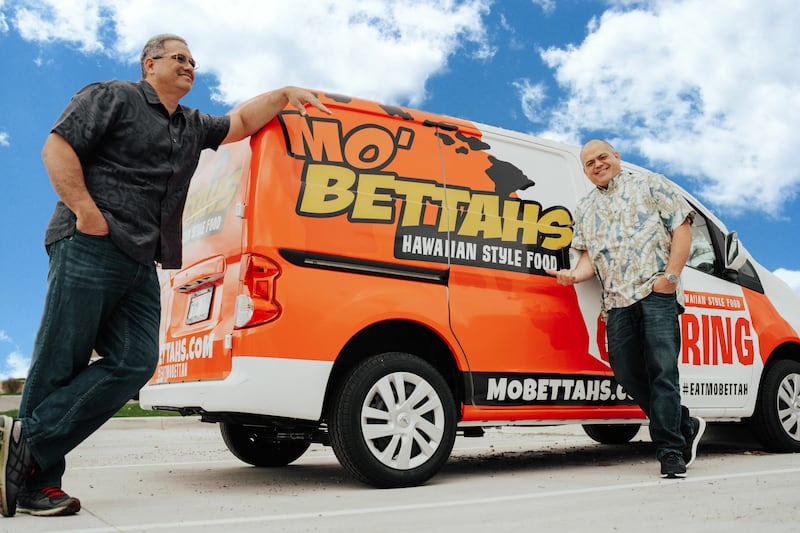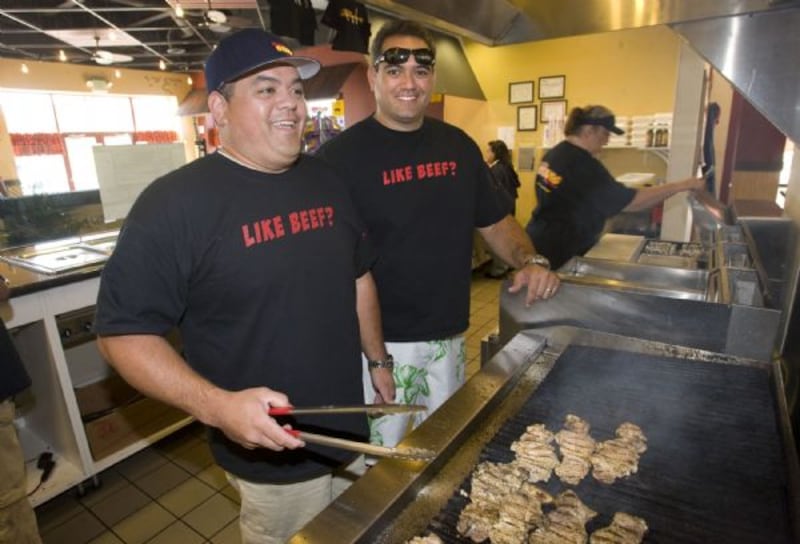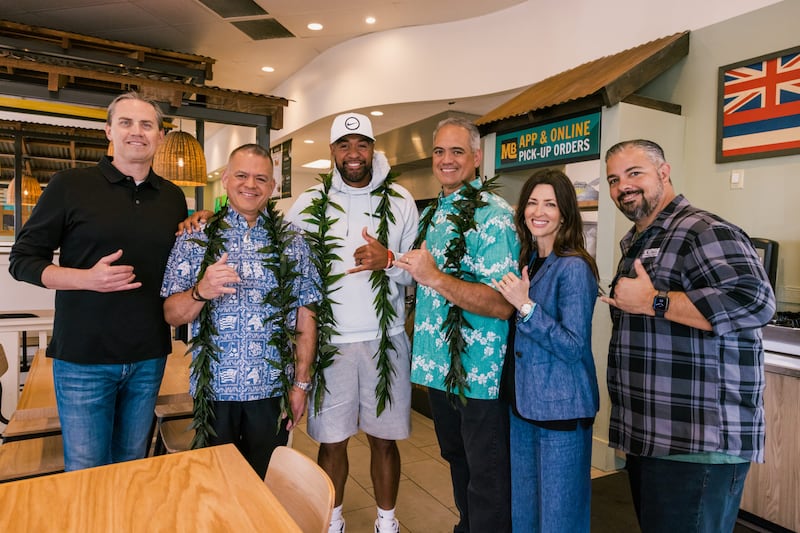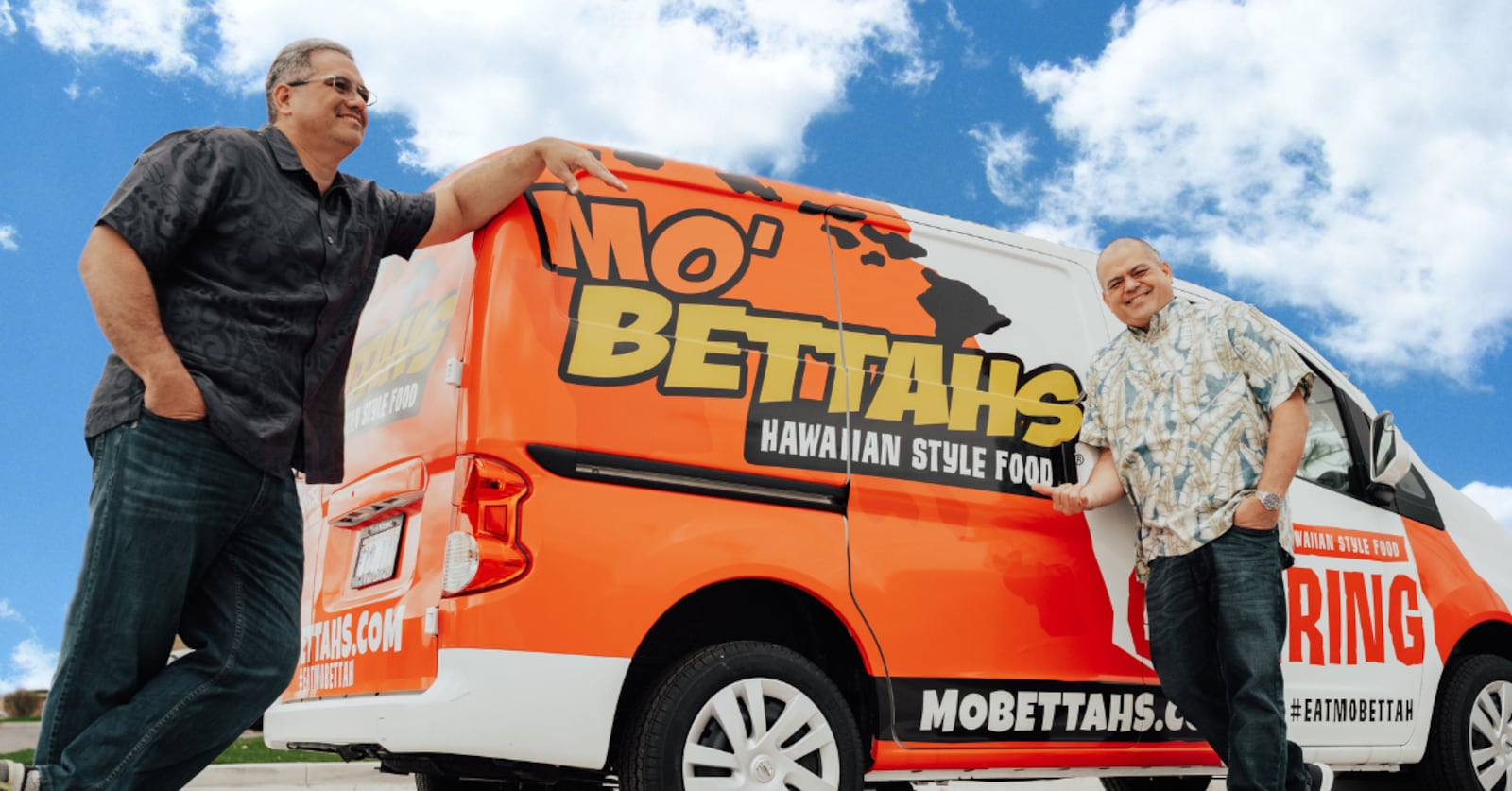
My brother, Kalani, and I never planned on owning a restaurant—let alone almost 50 of them. We were just two bradahs from Hawai’i who knew how to cook, eat and work—but the way our lives have unfolded is beyond anything we could have imagined.
As teenagers, we worked at Zippy’s restaurant. It’s a staple in Hawai’i, serving up local favorites like plate lunch, spam musubi, and chili. We started as dishwashers and moved our way up to lanai cooks. I loved it there. Seriously. I would go back and do it again.
As adults, we were city bus drivers on O’ahu—Kalani for six years and me for 15. In 1998, Kalani moved out to Utah. Life was good, but life on the island is expensive, so he was the first one to fly the coop. In Utah, Kalani was working odd jobs, trying to figure out what his next stage of life would be.
During that time, I had resigned myself to thinking that I wasn’t “that guy.” There was no six-figure salary in my future—I was living the blue-collar life, and that was OK! But my wife and I were working three jobs in Hawai’i just to make it work. I was driving the bus, and my wife had a part-time job in addition to being a piano teacher.
We knew there had to be a better way, so almost 10 years after Kalani moved to Utah, I was finally convinced to join him on the mainland and start a venture together.
We decided to make a list of 10 business ideas because that’s what Robert Kiyosaki told us to do in his book, “Rich Dad Poor Dad.” We had no clue what our business should be, but he said after we made the list, we needed to work our way down it until one of them succeeded.
I still have that list. There was a tent business on it, as well as a T-shirt business (because everyone thinks they can start a T-shirt business). Opening a restaurant was third on the list, but it’s actually the first one we executed. Robert Kiyosaki said that, statistically, before you get to the tenth business on the list, one of them will make you wealthy. We nailed it on the first one. But because of the law of averages, there’s gotta be some dude out there on number nine saying, “CRAP. When am I gonna hit my success?” Sorry about that, braddah.
We ultimately landed on a restaurant because we kept thinking about how much we loved working at Zippy’s. There’s so much love and pride in serving up good food, and we really love good food. Our parents, aunties and uncles taught us how to cook from a young age.
In Hawai’i, there is always enough food to go around. It doesn’t matter how many cousins and friends crash the party, there’s always a seat at the table and a delicious plate to put in front of them. That’s why, as kids, we usually ended up eating out in the garage—there was never enough room in our tiny houses for everyone to fit! make food and sell it for money. For real. It was that simple.

In 2007, I sold my house in Hawai’i and liquidated my assets, which is what we used to fund our business. After Kalani picked me up from the Salt Lake Airport, we went to a potential store location in Bountiful that we found off KSL. We got taken to the cleaners on it, but how were we supposed to know we overpaid? We weren’t restaurateurs or real estate developers! We were just bus drivers from Hawai’i creating our own road map.
We studied the industry. We ate out … a lot. We’d sit down in a Cafe Rio, for example, and examine how they did things. We thought through the menu, the pricing and the bills. We watched how the dining room ran. We were obsessed with every aspect of service in the fast-casual space.
We decided on a small-ish menu. We’d perfect the staples and then grow our menu later. We were learning things on the fly, so we tried to start small and take things day by day.
For our name, we started as Mo’ Bettah Steaks. We thought steak would draw people in. On the logo, “steaks” was big and “Mo’ Bettah” was small. But our teriyaki chicken was by far the most popular protein on the menu, and we would overhear our customers say, “We need to get our Mo’ Bettahs on.” So we dropped the word “steaks” and found our calling.
Opening our first store
We opened in 2008, and our community showed up big time. We had a killer summer that year. We did $50k in a month, which was pretty good for a one-off business. Every morning I would go to the bank to make the deposit, and I would ask the teller to write down our balance on the receipt. If that balance was trending up, I was feeling good. Money in, money out.
In the beginning, all we really knew how to do was cook. We made a crazy amount of mistakes, but the trick is that we made each mistake only once. That’s where we shine as a partnership. We’re humble enough to know how to learn and how to pivot.
The economy crashed in the fall of 2008. It was terrifying. All the momentum we built came to a halt, and in November of that year, our total revenue was $17,000. There were days we made just $500. We had to ask ourselves, “How long do we go before we pull the plug? How low does the bank account need to go before we turn out the lights?”
But if the lights were still on, we could still sell food, so that’s what we did. We brainstormed ways to drum up business. On Facebook, we targeted former Latter-day Saint missionaries who had served missions in Hawai’i—people who were nostalgic for the Hawaiian plate lunch. And after Christmas that year, slowly but surely, business steadily grew.We knew it was time to open another store. We found a location in Salt Lake City, which we were able to open for the price of a car. And here’s my advice on that: Get open, get cash flow. People are so worried about everything being perfect from the get-go but start selling food as fast as you can. Be perfect later.

At around three stores, things were humming along. We were making money, and we started to pour capital into our existing restaurants to make sure everything was consistent across the system. Life was good. We were content.
But if you don’t grow, you start losing key people. We knew our growth was just the beginning. We opened our next store in Lehi, and that first month we did $100k in sales. We were blown away.
People started noticing our success, and we got all kinds of attention. Investors tried to throw millions at us, but it never felt right. They wanted to give us a bunch of cash, make us do all the work, and then call us once a month and say, “How are we doing?” Yeah … no, thank you.
We didn’t just need money. We needed guidance and an investment in our systems.
That’s when we met Andrew and Shauna Smith. They are the founders of Savory Fund, which invests in emerging restaurant concepts ready to grow. They don’t just throw money at you; they throw partnership at you. Over the last six years, they’ve listened, learned and led our expansion with both smarts and heart. They’ve supported us with HR, accounting, marketing, development and strategies—all while valuing our vision for the brand and letting us have give and take, push and pull. They didn’t want us founders to get out of the way. They valued our experience and heritage and helped us leverage it so we could grow the right way.
Since the partnership, we have started refreshing the brand and our stores. Our 2.0 design includes artwork of the islands, surfboards that have touched Hawaiian waters, and shed roofing to pay homage to the garages we used to eat in while growing up.
We’re not here for the tourist trap. We don’t do pineapples, hula skirts or tiki torches. And by the way, we’ve never eaten “Hawaiian haystacks” in our life. Our goal has always been to give people a taste of the real Hawai’i. Everything is mo’ bettah when it’s authentic.
Hitting 50 stores in 2023
Our six stores became 12—then 20, 37, 42. We’ll hit 50 this year, the year Mo’ Bettahs turns 15 years old. We’ve got nearly 160,000 people in our loyalty program. We have an incredible executive team led by CEO Rob Ertmann. We’ve expanded all throughout Utah and to Texas, Idaho, Oklahoma, Kansas and Missouri.
Within the next year, we’ll be in Arizona, Nevada and Colorado. If you had told me 10 years ago that I could have a location in Kansas, I would have told you that you were nuts. And now the question is, “Where aren’t we going to go?”
In May 2023, we announced our partnership with Tony Finau. One of the best golfers in the world is now an investor in Mo’ Bettahs and a brand ambassador for us, all because he loves our food. That was a surreal moment for us Polynesian boys.
People ask us for advice all the time, and I always tell them not to cheat the process. Don’t try to hack it. Don’t skip steps. They think there’s a way of getting past the mom-and-pop stage without saving money, but there’s no way around it. You gotta put your heart and soul into it. It’s easy to waste someone else’s money, but when you have skin in the game, you put in the work.
Wherever we go, it’s an honor to “spread da aloha.” Mo’ Bettahs has become so much more than a business idea on a list. It’s sharing our culture and giving customers a taste of Hawai’i as the locals know it. And the best part? We’re still the same braddahs. In fact, we still cook the same food at home as we do in the restaurant. We wear our slippahs and our shorts. I live in the same house I did 10 years ago. It’s a simple life, and it’s a good one—but I can buy a cooler Harley now.

